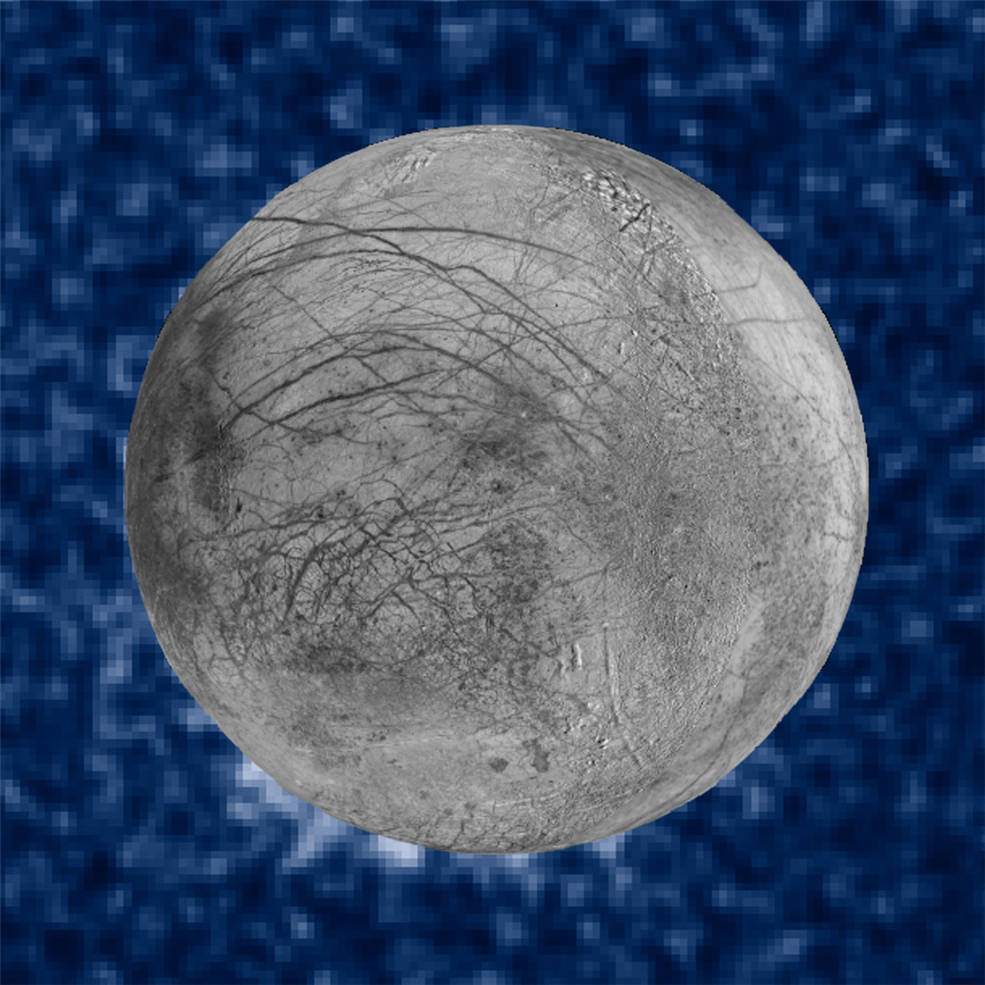NASA may have discovered water geysers on Europe

On September 20, NASA attracted the attention of scientists and amateur astronomers with a message about the upcoming teleconference, which was to be held (and was held on September 26). On it, the agency's experts were to inform important news about the new results of observation of Europe, the satellite of Jupiter.
The conference was held as planned. Representatives of the agency said that the Hubble Space Telescope probably recorded giant water geysers on Europe. Scientists suggest that life can exist on this satellite, since water here exists in liquid form. NASA is currently developing a project to send an automatic station to Europe that would be able to survey the under-ice regions of the planetoid.
Previously it was believed that without drilling (or melting) ice into the ocean of liquid water of the satellite of Jupiter it would be impossible to get there. If it is confirmed that Europe is experiencing water emissions in the form of steam from under ice, this will make it easier for scientists. After all, the thickness of the ice cover of the water ocean in Europe is many kilometers. Making a through hole in this ice is a daunting task. There is a lot of water here - planetologists claim that the volume of water resources in Europe is similar to the volume of water in all the oceans of the Earth. But you don’t have to drill - if there are geysers on the planetoid, you can take a sample of water that hit the surface, having traveled several kilometers.
')
Now, scientists are considering the option of studying samples of water emissions. This will make it possible to determine life or its traces without the need to dive into the waters of the under-ocean. Apparently, geysers are thrown to a height of up to 200 kilometers above the surface of the planetoid.

If geysers do exist in Europe, this opens up another opportunity for scientists to study the planetoid exosphere. Nobody doubts that there is a subtle resemblance of the atmosphere here. But to study this layer is a difficult task. Geysers can help solve the problem scientists. “The atmosphere of any planet closes part of the radiation of the stars behind it. If there is a thin atmosphere in Europe, it should absorb a small amount of light reflected from Jupiter, and with careful observation we can see and record this atmosphere, ”says one of the participants of the working group on European studies.
Over the past 15 months, scientists have been able to observe the passage of Europe on the disk of Jupiter 10 times. In three cases out of ten, specialists recorded unusual formations on the surface of Europe, which, most likely, are geysers.
In 2012, scientists have already reported about the possible observation of a geyser over the south pole of Europe. Its height, according to astronomers from the South-West Research Institute in San Antonio (Southwest Research Institute in San Antonio), was 160 kilometers. Now this observation is confirmed by the data that the Hubble Space Telescope transmitted to Earth.
“When we began to think about what these structures are and what is required for their appearance, we came to about the same conclusion as our colleagues from the South-West Research Institute in San Antonio,” said William Sparks. ] from STScI (Space Telescope Science Institute). Sparks says that the height of geysers in Europe is approximately equal to 160-200 km. This is evidenced by the results of observations of the satellite Jupiter telescope "Hubble"
Interestingly, two teams of specialists saw the geysers independently. Planetologists assume that geysers accidentally appear in different places and after reaching the maximum height they quickly subside.
If geysers on Europe really exist, then this is already the second planetoid of the Solar System, where scientists have seen a similar phenomenon. In 2005, astronomers first observed similar eruptions on Enceladus, the satellite of Saturn.

Apparently, liquid water in the solar system is the rule rather than the exception. The presence of ocean liquid water on the satellite of Saturn is proved. The confirmation was provided by Cassini, a space probe that arrived at Saturn in 2004, and spent the last decade studying this planet and its satellites. Earlier, scientists explained the appearance of geysers with lenses of liquid water, but now it has been proven that the waters on Saturn’s satellite are an entire ocean.
After launching the James Webb telescope into space, scientists will be able to obtain confirmation or refutation of the existence of geysers in Europe and other solar system objects. The capabilities of the telescope far exceed the capabilities of the Hubble. “James Webb” will have a composite mirror 6.5 meters in diameter (the diameter of the Hubble mirror is 2.4 meters) with a collecting area of 25 m² and a solar panel the size of a tennis court. The telescope will be located at the L2 point L2 of the Sun-Earth system.
Unfortunately, the launch of the telescope is constantly postponed. Now it is postponed to 2018. In principle, the Hubble telescope also works fine. Hubble is equipped with unique features that allow the telescope to observe what is happening in Europe.

Now in the solar system there are already three objects where, according to scientists, there is an under-ice ocean. This is Europe, the satellite of Jupiter, Ganymede, and Enceladus. Traces of liquid water and water ice are found on a large number of other objects in the solar system.
Last year, scientists tried to find water geysers in Europe, but all attempts were unsuccessful. It has even been suggested that in reality there are no geysers on the planetoid. Now, as we see, a refutation of this hypothesis has been received.
Source: https://habr.com/ru/post/397789/
All Articles